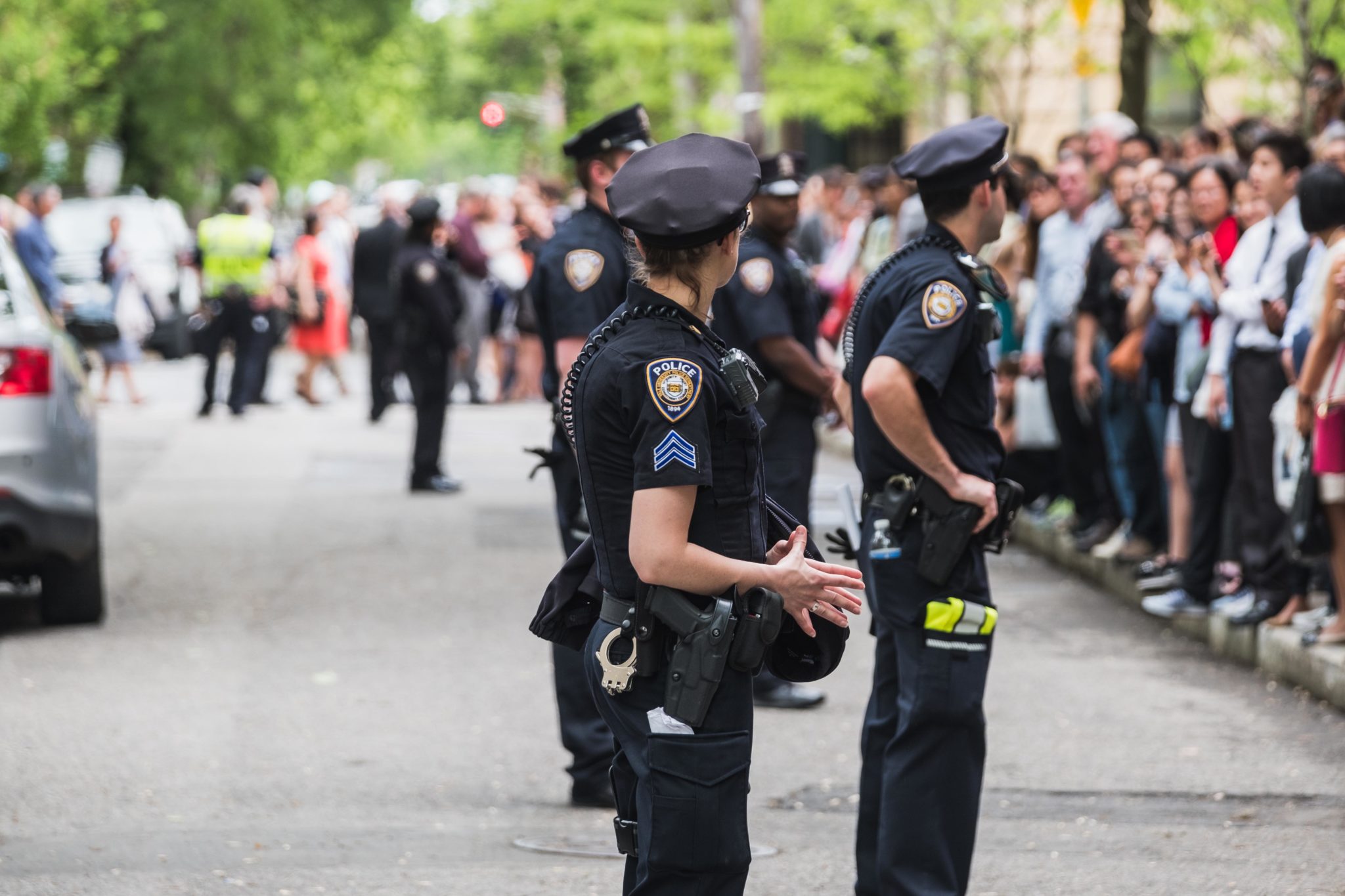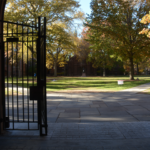
Eric Wang, Senior Photographer
Last week, a coalition of student groups released a report analyzing the activities of the Yale Police Department and reiterated their calls for the abolition of the department.
The report, published on behalf of the Abolition Alliance at Yale, is titled “It’s Time for Abolition: An Analysis of the Yale Police Department’s Activity.” The AAY comprises the Yale Undergraduate Prison Project, Black Students for Disarmament at Yale, Concerned and Organized Graduate Students, the Black Law Students Association, Racial Capitalism and the Carceral State Working Group and the Endowment Justice Coalition.
The group’s report spans 45 pages and statistically analyzes the YPD’s crime logs, including its clearance rates — the percentage of reported crimes that have resulted in a charge or arrest — and the amount of missing or damaged assets that the department has been able to recover. AAY claimed that despite YPD’s ample funds, it rarely handles serious crimes that pose physical threat to individuals and often does not solve crimes. The group also argued that YPD disproportionately targets Black and brown community members.
“The traditional image is that YPD is protecting people,” Laura Haight ’23, a co-writer of the report and member of the YUPP Police Accountability advocacy group said. “Well not really, right? That’s not what the community is asking for — a police force that patrols in New Haven, outside of New Haven and around Yale.”
The AAY began its research and brainstorming in June last year, and launched its data analysis in July. On Jan. 18, the group officially coalesced into an alliance.
Though the AAY’s report was released last week, both the YPD and University administration have yet to comment, according to AAY organizers. The YPD and the University did not respond to the News’ requests for comment.
The key findings of the report included that 55.85 percent of all crimes logged by YPD were related to capital and assets, whereas 2.46 percent were related to weapons and assault.
“[The YPD is] not extremely relevant or a productive means of creating community safety, whether you’re talking about protecting assets and capital or more conventional violent crime,” Willa Ferrer ’24, another co-writer of the report and member of the YUPP Police Accountability advocacy group said. “They’re not really necessary and don’t need to exist.”
The report also focused on the YPD’s clearance rate — generally defined by the FBI Uniform Crime Reporting program as cases where a police officer charges or arrests someone. As one of YPD’s primary functions, according to their website, is to “solve crimes through its investigative services and analysis units,” the report argued that clearance rates are one of the main determiners of the YPD’s efficacy. Between 2011 and 2018, the report states that average clearance rates for the NHPD and the state of Connecticut hover between 21 to 23 percent. The clearance rate for the YPD is just 8.05 percent, according to AAY.
Haight and Ferrer stressed that the conclusion from YPD’s relatively low clearance rate should not be to increase the department’s funds. Both agreed that improving the clearance rate would not necessarily result in justice, nor would it respond to community members’ requests to curtail YPD presence in New Haven.
AAY’s document also refuted what they call the YPD’s “exaggerated claims” regarding the need for a private police force. Last summer, YPD Assistant Chief Anthony Campbell ’95 DIV ’09 told the News that YPD receives 20,000 to 30,000 calls annually, but AAY’s data found that only 10,604 calls to YPD were logged in 2019. Medical calls to YPD were the most frequent call category in 2015, 2016, 2017 and 2019. Therefore, AAY claims that YPD primarily responds to incidents of a medical nature and stated that “it is unclear why the YPD arms its officers with weapons to handle these requests.”
Of all the crimes that were logged from 2016 to 2019, just 0.46 percent were rape and sex offenses — because, the report noted, many students do not report cases of sexual assault to the YPD.
The YPD also has a low value recovery rate, according to AAY’s report. Between 2011 and 2019, YPD investigated $2,342,302 in belongings reported lost due to criminal activity. YPD has only been able to recover $127,662 — 5.45 percent of value lost.
Hannah Srajer GRD ’25, co-author of the report and co-founder of Concerned and Organized Graduate Students, said that the organization published the report in order to clarify the role of the police force on campus.
“It became really clear, particularly [last] summer, that one of the most important and pressing issues was the presence of the Yale Police Department, and all police departments,” Srajer told the News. “And what we can do is, as stakeholders in the University, they’re supposed to be protecting us ostensibly, right? As well, how can we sort of dismantle the fictions and illusions around what the YPD is and what the YPD does?”
Srajer also noted that COGS is planning to send a letter to the University administration, calling for the abolition of the YPD.
BSDY, YUPP and the Yale College Council will also hold a town hall meeting on Friday to discuss the future of policing at Yale.
Talat Aman | talat.aman@yale.edu
Razel Suansing | razel.suansing@yale.edu
Correction, April 15: A previous version of the story quoted Srajer as saying the YPD is “supposed to be protecting us sensibly” instead of “protecting us ostensibly.” The story has been updated.










